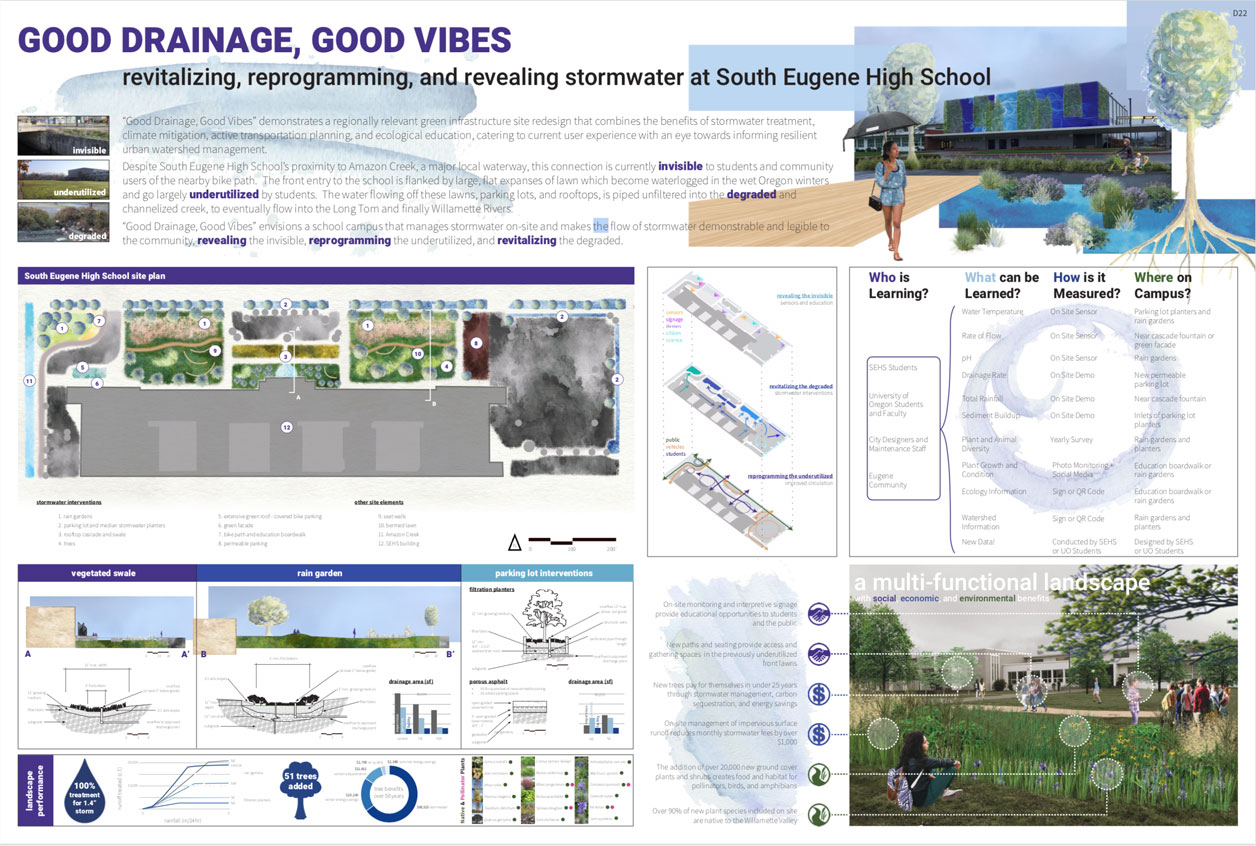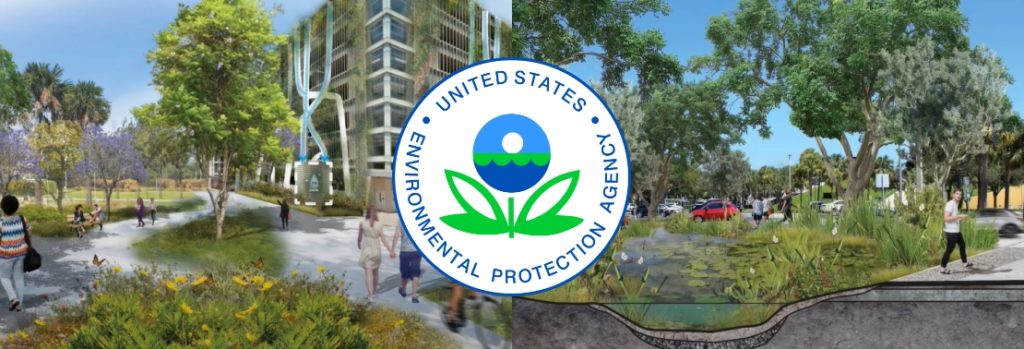EPA Press Office of EPA writes:
The U.S. Environmental Protection Agency (EPA) announced the winners of its seventh annual Campus RainWorks Challenge, a national competition that engages college students in the design of on-campus green infrastructure solutions to address stormwater pollution.
“EPA’s Campus RainWorks Challenge encourages students to transform classroom knowledge into innovative ideas to solve real-world environmental problems,” said EPA Administrator Andrew Wheeler. “I congratulate this year’s winners, and it is encouraging to see how contestants worked closely with their local communities to develop ways to protect water resources from harmful stormwater pollution.”
The Challenge winners are:
University of Oregon (1st Place Demonstration Project Category) – The team’s project, titled “Good Drainage Good Vibes,” redesigned a local high school campus to incorporate a variety of green infrastructure practices. Extensive stakeholder engagement within the community led to a practicable design capable of not only managing stormwater runoff onsite, but also providing hands-on education for students and connecting the local community their watershed.

Watch the team’s video about their project:
University of Louisiana at Lafayette (1st Place Master Plan Category) – Titled “The Ripple Effect,” this project’s ambition reached beyond the borders of its own campus. Located in low-lying Southern Louisiana, the community of Lafayette often experiences extreme weather events that cause flooding and threaten infrastructure. With the support of the university’s Department of Sustainability, the team redesigned their campus to incorporate realistic, replicable green infrastructure practices that engage with the broader community to cultivate regional resiliency.

Watch the team’s video about their project:
Congratulations to all the other winners.
Green infrastructure tools and techniques for stormwater management include green roofs, permeable materials, alternative designs for streets and buildings, trees, habitat conservation, rain gardens, and rain harvesting systems. Utilizing these tools decreases pollution to local waterways by treating rain where it falls and keeping polluted stormwater from entering sewer systems. Communities are increasingly using innovative green infrastructure to supplement “gray” infrastructure such as pipes, filters and ponds. Green infrastructure reduces water pollution while increasing economic activity and neighborhood revitalization, job creation, energy savings, and open space.
Read more: EPA Announces the Winners of the 7th Annual Campus RainWorks Challenge
 Greenroofs.comConnecting the Planet + Living Architecture
Greenroofs.comConnecting the Planet + Living Architecture









